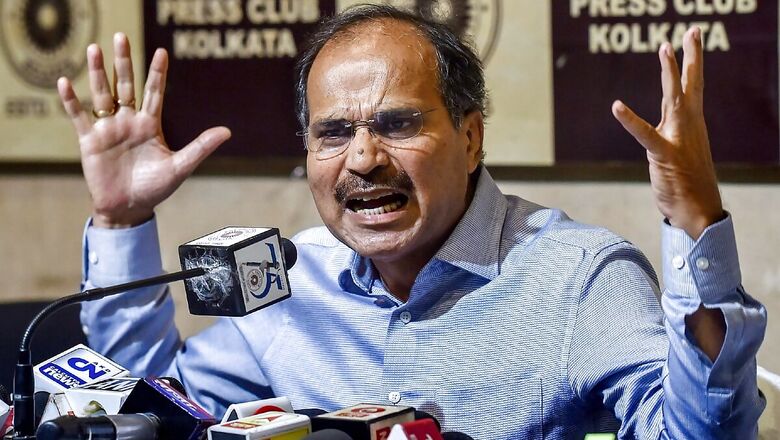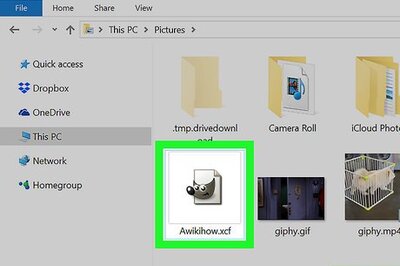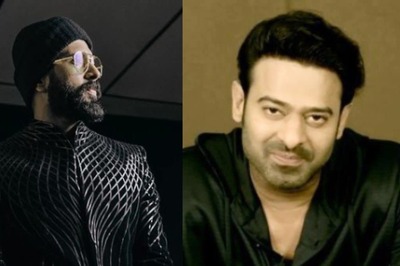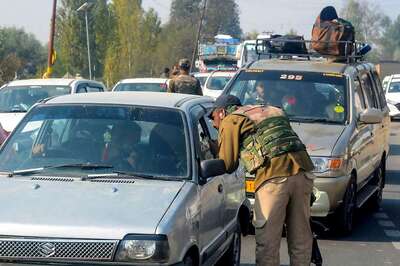
views
West Bengal Congress leaders have expressed their desire to project Adhir Ranjan Chowdhury as the face of the party’s alliance with the CPI(M) in the upcoming state assembly elections. Leaders of the Left, however, are hopeful that the Congress would not place such a demand on the table to protect the alliance that waded troubled waters when the parties last collaborated for the 2019 Lok Sabha polls.
The alliance had made way for a polarised election in 2019, thereby creating a favourable political position for the Bharatiya Janata Party (BJP) in West Bengal. However, the Left and the Congress now seem to be keen on avoiding a repeat of the general election and take the workings of alliance seriously. To that end, the two parties got together in June to brainstorm on the future course of action and a political strategy to take on the ruling Trinamool Congress (TMC) and BJP in the state.
Riju Ghoshal, a senior leader of the West Bengal Congress, said, “Undoubtedly, Adhir Ranjan Chowdhury is a strong leader in West Bengal. Although it was has not been officially decided, we feel that he should be the face of the alliance.”
Ghoshal reasoned that there is a general perception that the seasoned Parliamentarian could posit a challenge before Chief Minister and TMC chief Mamata Banerjee. “Based on our feedback from the grassroot level we feel that Adhir Ranjan Chowdhury should be the face of the alliance,” he said.
The matter will also be taken up with the Left during a meeting to discuss poll preparedness, Ghoshal said. “I think there won’t be any problem with projection Chowdhury as the face of the alliance. Our alliance with the Left is unbreakable, and in the coming days, it is going to gain more strength to fight both the TMC and the BJP,” he asserted.
The CPI(M), however, may be wary of such an assertion. In fact, given the track record of the alliance, the Congress’ push for Chowdhury to represent the gathbandhan may very well jeopardise the deal.
CPI(M) MLA Tanmoy Bhattacharya was of the opinion that the Left-Congress alliance has a number of “faces”, Chowdhury being one of them. “I think it is a fact that Adhir Ranjan Chowdhury is a face but that does not mean that there are no other faces…There are many faces,” he said. He went on to enumerate several other candidates from the CPI(M) — state secretary Suryakanta Mishra, Left front chairman Biman Bose, and senior leader Sujan Chakraborty — who he deemed fit to represent the alliance.
“Here, I would like to clarify that our fight with the TMC and the BJP is not based on who will be the face of the alliance. Our fight is based on our niti (policy) against them. So far, I have not heard anything officially on this from the Congress party. I personally feel that Congress will never put forward such an issue during the alliance meeting,” Bhattacharya said.
Talking Points
In the event that Chowdhury’s projection becomes a point of contention between the two parties, and the TMC falls short of the magic number to form the government, the situation could be rife with opportunity for Mamata Banerjee who seems to share a good relationship with United Progressive Alliance (UPA) chairperson Sonia Gandhi. The bonhomie between the two was evident when Gandhi asked Mamata to take over the reins of a virtual meeting in August on the Covid-19 pandemic and the JEE and NEET exams.
The gathbandhan’s history suggests that the Congress’ insistence could indeed spell trouble once again.
For the 2019 Lok Sabha elections, the Left front had announced its list of candidates despite the Congress’ request to withhold the names until its seat-sharing issue was resolved. The Congress had wished to contest on 17 seats including Purulia, Bankura, Bashirhat, Darjeeling, Jalpaiguri, Krishnanagar, Hooghly, Burdwan, Howrah and East and West Midnapore. The CPI(M), on the other hand, wasted to field candidates to 31 seats.
There was conflict between the parties over the Purulia, Bashirhat and Jalpaiguri seats, and issues were also raised over Murshidabad and Raiganj constituencies. The matter, however, was resolved after Sonia Gandhi spoke to CPI(M) general secretary Sitaram Yechury.
Track Records in Bengal
The BJP saw a meteoric rise in its fortunes in Bengal between the 2016 state assembly election and the 2019 Lok Sabha election. In 2016, its vote share was 10.2 percent, but it shot up to 40.3 percent in the general election. Over the the past three years, the party has managed to cultivate a politics driven by religion in the state, as is evident from the increase in its vote share.
The Left front, meanwhile, lost its vote share by 9.88 percent between the 2011 and 2016 assembly election. In the Lok Sabha polls last year, its share of votes plummeted to nearly 16 percent.
For the Congress, the vote share rose from 9.91 percent to 12.3 percent between the 2011 and 2016 state polls, but the party did not fare well in the general election. Its vote share fell to 9.6 percent in 2014, and the party received a drubbing with a measly 5 percent share in 2019.
In the 2011 Assembly elections, the TMC’s vote share was 39 percent, which increased to 39.56 percent in 2016. Similarly, in the 2014 Lok Sabha polls, its vote share was 39.03 per cent which rose to 43.3 percent by 4.27 per cent in the 2019 general election.
There was no decline in the TMC’s share of votes, which seemed to suggest that votes once with the Left and the Congress went to the BJP.
Read all the Latest News, Breaking News and Coronavirus News here




















Comments
0 comment